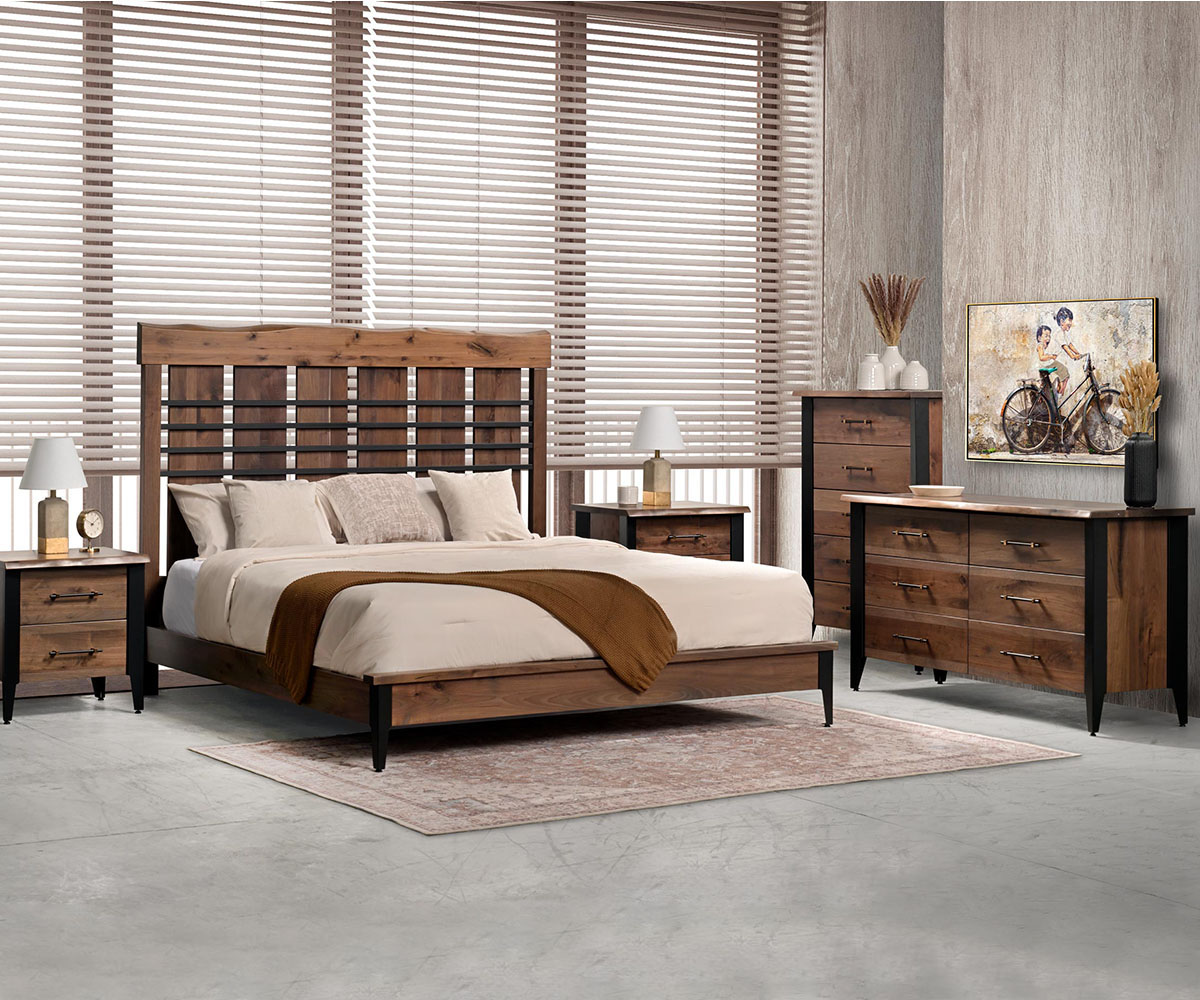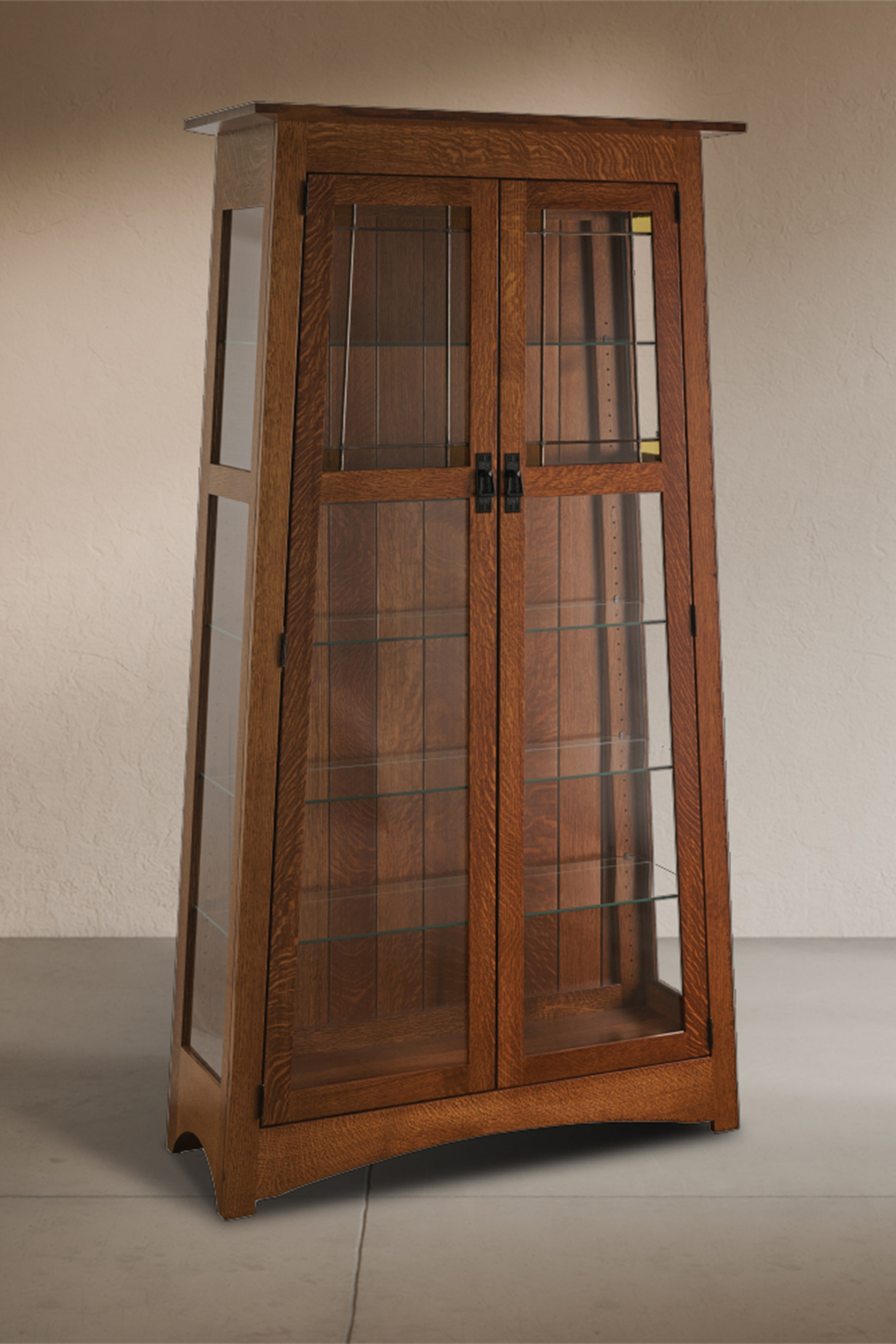
Furniture Design in 2025: Top 2 Trends to Watch
Simplicity & Craftsmanship Define Design Trends of 2025
With an emphasis on sustainability, craftsmanship, and simple elegance, the furniture design trends of 2025 offer timeless yet forward-thinking designs. Whether through heirloom-quality Amish pieces, artisanal customization, or minimalist aesthetics, this year’s trends celebrate furniture that enhances home and lifestyle.

Sustainability
The Amish embrace sustainable living—not as a trend but as a way of life. Their values of frugality, practicality, and respect for nature naturally lead to lean manufacturing and minimal waste. Because they operate off the grid, their shops close at 5:00 PM and remain dark on weekends. Their small-scale workshops carefully manage resources, ensuring minimal waste. Generations of agricultural heritage have instilled creativity in repurposing materials and by-products.
Their sustainability is key to their commitment to the local economy. Unlike mass-market retailers like Ikea and Ashley, Amish furniture makers source wood from nearby forests. Their entire community participates in a seamless supply chain—many operate lumber mills and dry kilns, while others specialize in elements like turnings or bentwood craftsmanship. The high number of Amish entrepreneurs allows them to maintain low overhead with small workshops. However, their most significant savings come from reduced transportation: most Amish furniture shops source and manufacture within their state.
Durability also sets Amish furniture apart. Designed as heirlooms, their pieces serve multiple generations, keeping solid wood furniture out of landfills. Unlike disposable furniture, Amish pieces often appreciate in value. These furnishings are free from plastics and synthetic chemicals and offer environmentally friendly disposal options.
Artisanal Pieces
Artisanal furniture celebrates individuality and craftsmanship. A century ago, Amish farmers crafted furniture to occupy the dark winter months, infusing each piece with personal artistry. Today’s craftsmen work year-round for larger customer bases, but their dedication remains unchanged. They train and pay their workers as skilled artisans, maintaining small shops for meticulous quality control.
One of the most distinctive aspects of the furniture is its customizable nature. The Amish invite customers to participate actively in the design process, selecting size, wood type, stain, and fabric. With fair pricing and a commitment to value, Amish furniture makers help create pieces that reflect each customer’s home and vision.


Unique Wood Finishes
Unique wood styles will also shape 2025’s artisanal furniture trends. Mike Robinson of Towne Haus in New Jersey observes, “We’re embracing imperfections in the wood. It’s different from the mass production found in lifestyle stores.” His Uptown Lahaska bedroom collection by Urban Barnwood features rustic walnut, where naturally occurring knots become design elements rather than flaws. Combining wood with metal, this aesthetic delivers a modern yet casual warmth.
Amish craftsmen continue to innovate with storage solutions. They create timeless farmhouse staples like hutches, pie safes, jelly cabinets, armoires, and wardrobes. The quarter-sawn oak Arts & Crafts Cabinet by Genuine Oak Designs exemplifies their dedication to slow, meticulous craftsmanship.
Simple Designs
Amid today’s fast-paced lifestyles, simple designs remain dominant. Mid-century modern and Scandinavian furniture styles emphasize clean lines and functional beauty. Many designers note a rise in wood tones at both ends of the spectrum—Scandinavian blond on one side and deep, rich woods on the other.
This Scandinavian influence is evident in the Ventura, Venhaus, and Elenor collections. These table and chair sets feature lighter wood tones, curved lines, and a modern aesthetic. Scandinavian culture prioritizes family and functionality, making dining room furniture a focal point. Designed for gathering, these pieces balance comfort with practicality. Table legs remain simple, free of intricate carvings, while lightly padded chairs provide just enough cushioning to encourage conversation without inducing inertia. These designs foster relaxation without excess and comfort without complacency.


Modern Look with Classic Roots
Mid-century modern furniture, by contrast, leans into rich, jewel-toned wood. This style shines in storage pieces like entertainment centers, buffets, and office furniture. Defined by right angles and deep wood hues, these pieces bring history and elegance without overwhelming a space. As home offices become more prevalent, this aesthetic merges minimalism with post-war optimism. The Camden and Marina Office Collections exemplify the balance of sophistication and simplicity.
New designers like Robinson seek fresh ways to refine minimalist styles. The Westal Table, manufactured by RH Yoder, exemplifies this approach with its solid tabletop and uniquely structured legs. While softer design elements appeal to many, customers frequently gravitate toward a casual, modern look. The Westal Table’s base defies traditional categories—neither a leg, pedestal, nor trestle—delivering a familiar yet innovative form.
Imagine stepping into a home where every piece of furniture blends familiarity with freshness, where new designs embrace handcrafted warmth. The furniture design trends of 2025 highlight artisanal craftsmanship, sustainability, and simplicity. This year presents the perfect opportunity to invest in new furniture from an Amish shop. These traditional farmers-turned-craftsmen now lead the industry with cutting-edge designs, exceptional craftsmanship, and time-honored techniques.
